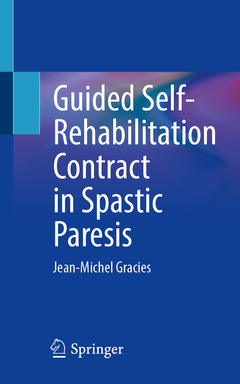Description
Guided Self-Rehabilitation Contract in Spastic Paresis, 1st ed. 2022
Language: English
Subjects for Guided Self-Rehabilitation Contract in Spastic Paresis:
118 p. · 12.7x20.3 cm · Paperback
Description
/li>Contents
/li>Biography
/li>Comment
/li>
Dr. Gracies completed his residency in intensive care, neurologic rehabilitation, neurology, and stroke pathology at Hôpitaux de Paris, France, and received his medical degree and doctorate in neurophysiology from the University of Paris VI, earning the highest possible grade for both theses. He completed a postdoctoral fellowship in pathophysiology and therapy of spasticity at Prince of Wales Medical Research Institute, in Sydney, Australia, and a fellowship in neurology and movement disorders at Mount Sinai Medical Center.
Some of his research focuses on perfecting diagnostic methods for Parkinson’s disease and generating algorithms for the adjustments in deep brain stimulation. He is principal investigator for research projects aimed at ameliorating motor function in spastic paresis, tremors, and Parkinson’s disease. These projects concentrate on improving evaluation methods for muscle overactivity, injection techniques and action mechanisms of botulinum neurotoxin in spastic paresis and tremors, and other focal treatments for spastic paresis.
Dr. Gracies lectures internationally on the pathophysiology and treatment of spasticity, the treatment of tremors using botulinum neurotoxin, and programming methods for deep brain stimulation and has authored more than 90 original articles, book chapters, theses, reviews, and abstracts.
Dr. Gracies has served on the editorial board of Journal of Neural Transmission. Currently, he is an ad-hoc reviewer for many journals, including Archives of Physical Medicine and Rehabilitation, Movement Disorders, Muscle Nerve, Stroke, Experimental Brain Research, American Journal of Rehabilitation, Brain, Journal of Applied Physiology, Lancet Neurology, and Journal of Neurology, Neurosurgery, and Psychiatry. Dr. Gracies is a member




